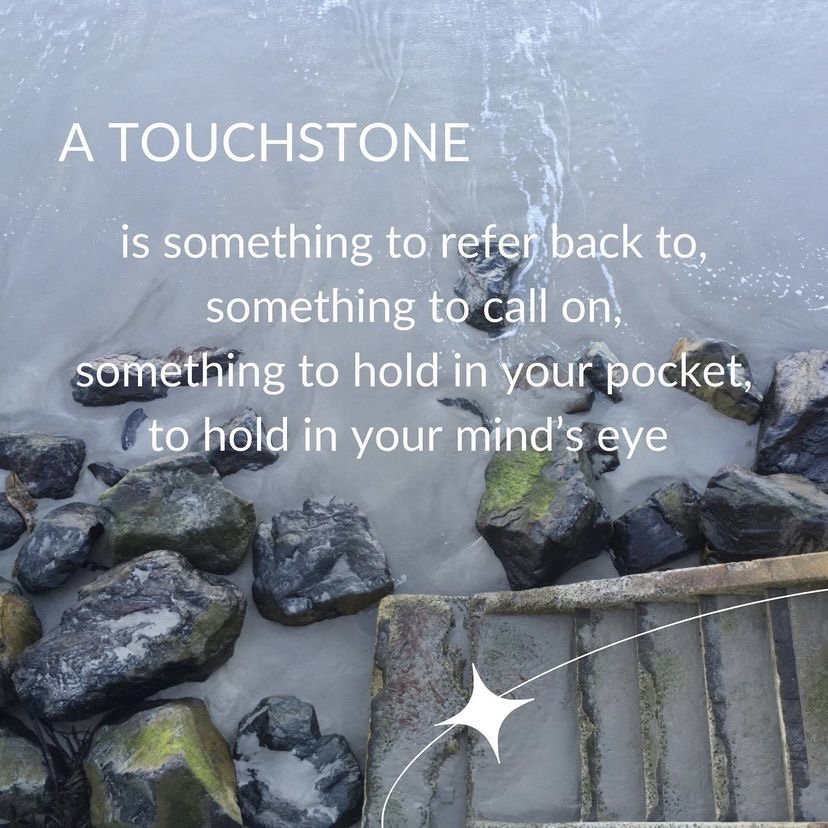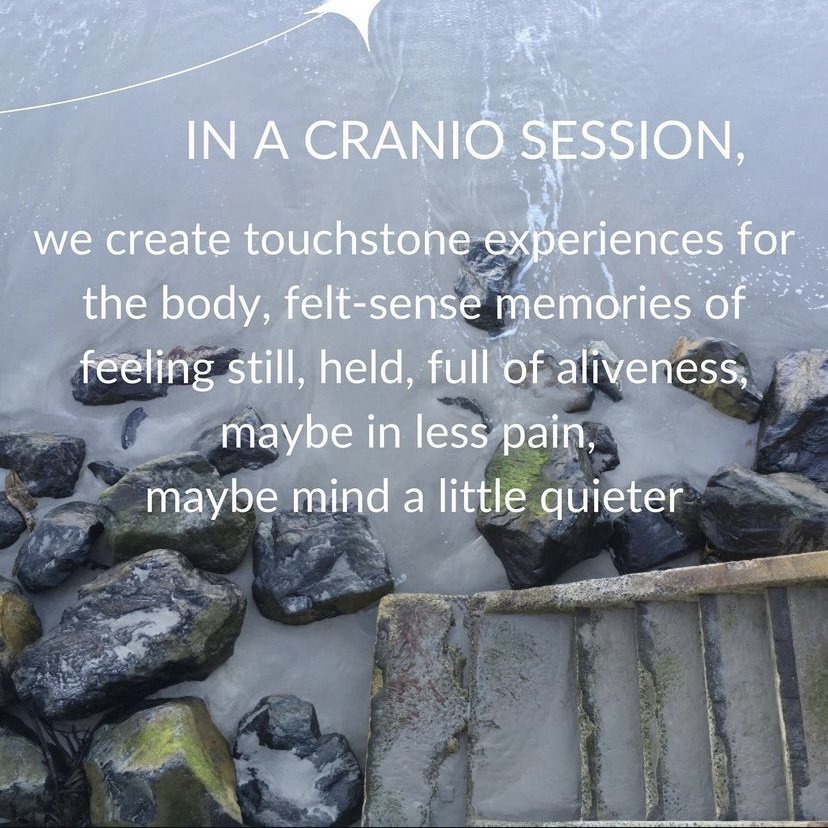
What is craniosacral therapy/BCST?
Biodynamic craniosacral therapy (BCST) is a form of light touch somatic bodywork that offers gentle and effective nervous system support.
Relational touch
BCST practitioners offer deep trust in the way that bodies respond to caring touch. Through creating a safe(r) container in which the body feels held and accepted as it is, a BCST session offers space to rest, move, and heal. The pace and spaciousness that biodynamic work offers can be a powerful support in healing embodied patterns of pain and trauma.
touchstone sessions explore how we might come more fully into our felt experiences of our bodies, and how we might relate in new ways to the stories our bodies hold, which is a practice which has implications for how we move in the world, both on an individual and collective level.
BCST can be effective in supporting:
injury and trauma
PTSD
chronic pain
headaches and migraines
anxiety and depression
insomnia
postural issues
digestive issues
… and more.
Postpartum/infant craniosacral
Babies and little ones who are struggling with the aftermath of a difficult birth, or who are having issues with latching, feeding, sleeping, or attachment can also benefit from craniosacral therapy. They are always welcome to join their parent in a session. Get in touch to hear more about craniosacral therapy for babies and children, and for birthing parents. More on this offering, coming soon.
In session
Craniosacral sessions usually happen with the client lying on their back on a massage table, fully clothed. The practitioner places their hands on various parts of the body, often focusing on the cranial-sacral midline which begins and ends at the sacrum and the cranial base.
The practitioner may use verbal cues and felt-sense meditations to help guide the client into a more fully embodied state. Throughout the session, the practitioner listens carefully and attentively to different expressions in the client’s physiology. This deep listening and the practitioner’s responsiveness facilitates a space for the body to heal, within its capacity and at its own pace.
BCST meets the body where it is, without trying to elicit a particular response or catharsis from the system. Using light, spacious, compassionate hands, BCST practitioners offer their clients valuable resources for being in relationship with their whole system.
Why ‘touchstone’ craniosacral?
In our sessions together, we create touchstone experiences; body memories of feeling safe, held, and embodied that we can return to as resources in our daily lives. The more we practice being in our bodies in this way, the more familiar our systems are with this kind of deep presence and listening. Cultivating practices of embodiment, on and off the table, is a powerful tool for healing and for moving through our lives.
Lineages
Craniosacral therapy emerged from the lineage of osteopathy, a manual therapy that treats the body as a holistic system with an inherent ability to heal. The founder of osteopathy, Andrew Taylor Still, was profoundly influenced by Western physiology and anatomy as well as the bone-setting practices of the Shawnee and Cherokee medicine people. For more on the history of the work, and how we might situate ourselves in relation to that history, I’m grateful for this piece by BCST practitioner Susan Raffo.
My training in BCST was through the Victoria, BC chapter of Body Intelligence, with Ged Sumner and Lauren Miller.
My roots in somatic work have grown through teachers and practitioners in the generative somatics lineage, primarily via Danielle Bezaire, and are informed by the principles of healing justice, towards embodiment work as a commitment to collective liberation.
My bodywork practice is also informed by my meditation practice, through mindfulness, lovingkindness and insight teachings, which began in my childhood. I currently learn namely through western teachers Pema Chödrön and Tara Brach, and through the radical dharma teachings of Lama Rod Owens and Rev. angel Kyodo williams.






Resources
Here are some of my favourite resources re: BCST, somatics, and healing justice work.
BCST practitioner Susan Raffo’s blog on politicized bodywork.
Meditation teacher Tara Brach’s talks and meditations on body awareness and compassionate listening.
Becoming the People podcast on healing justice and more, with generative somatics teacher Prentis Hemphill.
Teachings on somatic abolitionism from cultural somatics practitioner Resmaa Menakem.
Pleasure Activism, on embodiment and social justice, by writer and generative somatics teacher adrienne maree brown.
A series of recorded awareness exercises and meditations from Body Intelligence.
Books:
Bone, Breath, and Gesture: Practices of Embodiment, ed. Don Hanlon Johnson
The Politics of Trauma, Staci K. Haines
Care Work: Dreaming Disability Justice, Leah Lakshmi Piepzna-Samarasinha
Healing Justice Lineages, Cara Page and Erica Woodland
Brilliant Imperfection: Grappling with Cure, Eli Clare
Pain is Really Strange, Steve Haines
